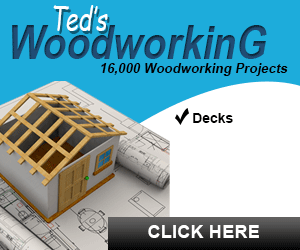DIY Coffee Table Plans: 15 Beginner-Friendly Designs for Your Home in 2025
Are you looking to add a personal touch to your living space without breaking the bank? Imagine a stylish coffee table that perfectly fits your room, built by your own hands. It’s not just a dream! Building your own coffee table is a rewarding project that combines creativity, practical skills, and the joy of seeing your vision come to life. Many people think woodworking is too hard, but with the right plans and a bit of patience, even beginners can create beautiful and functional furniture. In 2025, DIY projects are more popular than ever, and a coffee table is an excellent starting point for anyone looking to dive into home improvement.
This comprehensive guide will walk you through 15 beginner-friendly DIY coffee table plans. We’ll cover everything from choosing the right materials to finishing your masterpiece. Get ready to transform your living room with a unique piece that tells a story – your story! 🛠️✨
Key Takeaways
Start Simple: Many coffee table designs are perfect for beginners, requiring basic tools and materials.
Save Money & Customize: Building your own table is often cheaper than buying one and allows for complete personalization of style, size, and finish.
Essential Skills: You’ll learn fundamental woodworking techniques like measuring, cutting, drilling, and finishing.
Safety First: Always prioritize safety by wearing protective gear and understanding your tools before starting.
Creative Freedom: From rustic pallets to modern hairpin legs, there’s a design for every taste, offering a fun way to express your style.
Why DIY Your Coffee Table? The Benefits Are Clear!
Building your own coffee table offers a wealth of advantages that go beyond simply acquiring a new piece of furniture. It’s an empowering experience that yields both tangible and intangible rewards.
Cost Savings 💰
One of the most compelling reasons to DIY is the potential for significant cost savings. Store-bought coffee tables, especially those made from solid wood or with unique designs, can be quite expensive. When you build your own, you only pay for the raw materials, which are often much cheaper. You can also hunt for reclaimed wood or repurpose existing items, further reducing costs. This allows you to achieve a high-end look without the high-end price tag.
Customization and Personalization ✨
This is where your creativity truly shines! When you DIY, you’re not limited to what’s available in stores. You can choose the exact dimensions to fit your space perfectly, select the type of wood or material that matches your existing decor, and apply a finish that reflects your personal style. Want a specific stain? A unique paint color? Built-in storage? You have complete control over every detail. This level of personalization ensures your coffee table is truly one-of-a-kind.
“A DIY coffee table isn’t just furniture; it’s a statement piece that reflects your unique style and craftsmanship.”
Learning New Skills 🧠
Embarking on a DIY project is an excellent way to learn practical skills. You’ll become familiar with various tools, understand different types of wood, and master techniques like cutting, sanding, drilling, and finishing. These skills are not only useful for this project but can be applied to countless other home improvement tasks in the future. It’s a fantastic educational experience that builds confidence.
Sense of Accomplishment 💪
There’s an incredible feeling of pride and satisfaction that comes from creating something with your own hands. Every time you look at your finished coffee table, you’ll be reminded of your hard work and ingenuity. It’s a tangible representation of your effort and a conversation starter when guests visit.
Quality and Durability 🌳
When you build your own furniture, you can ensure the quality of the materials and the craftsmanship. You can choose solid wood over particle board and use strong joinery techniques, resulting in a table that is often more durable and long-lasting than mass-produced alternatives.
Essential Tools and Materials for Beginners
Before you start, it’s helpful to gather some basic tools and understand common materials. Don’t worry, you don’t need a professional workshop! Many beginner-friendly projects can be completed with a modest toolkit.
Basic Tool Kit 🧰
Measuring Tape and Pencil: For accurate measurements and marking cuts.
Safety Glasses and Gloves: Always protect your eyes and hands!
Drill/Driver: Essential for drilling pilot holes and driving screws. A cordless drill offers great flexibility.
Saw:
Hand Saw: Affordable and good for small, straight cuts.
Circular Saw: Faster and more powerful for longer, straighter cuts on larger boards.
Jigsaw: Great for curves and intricate cuts.
Sander:
Orbital Sander: Makes sanding much faster and smoother.
Sanding Blocks/Paper: For hand sanding, especially in tight corners.
Clamps: Hold pieces together while glue dries or while drilling/cutting.
Square: Ensures your cuts and assemblies are perfectly square.
Wood Glue: For strong, lasting joints.
Screws/Nails: Appropriate fasteners for your chosen materials.
Common Materials 🪵
Lumber:
Pine: Affordable, easy to work with, and takes stain well. Great for rustic or painted finishes.
Plywood: Versatile sheets of wood veneer, good for tabletops, shelves, and box designs.
MDF (Medium-Density Fiberboard): Smooth, dense, and great for painting. Less durable than solid wood.
Reclaimed Wood: Pallets, old fence boards, barn wood – adds character and is eco-friendly.
Metal: Hairpin legs, industrial pipes – for modern or industrial styles.
Concrete: For a modern, minimalist, or industrial look. Can be heavy.
Safety First! 🩹
Woodworking is fun, but safety should always be your top priority. Accidents can happen quickly, so take precautions.
Wear Protective Gear: Always wear safety glasses to protect your eyes from flying debris. Gloves can protect your hands from splinters and cuts.
Read Tool Manuals: Understand how to properly and safely operate each tool before using it.
Keep Your Workspace Clear: A cluttered workspace can lead to trips and falls. Ensure good lighting.
Secure Your Workpiece: Always clamp your wood securely before cutting or drilling. This prevents the wood from moving and causing kickbacks or inaccurate cuts.
Unplug Tools When Changing Blades/Bits: Never make adjustments to a tool while it’s plugged in or powered on.
No Loose Clothing or Jewelry: These can get caught in moving parts of power tools.
Work in a Well-Ventilated Area: Especially when sanding or applying finishes, to avoid inhaling dust or fumes.
Understanding Basic Woodworking Terms
Getting familiar with a few common terms will help you understand plans and instructions better.
Grain: The natural pattern of fibers in wood.
Board Foot: A unit of measurement for lumber (1″ thick x 12″ wide x 12″ long).
Kerf: The width of the cut made by a saw blade.
Pilot Hole: A small hole drilled before driving a screw to prevent the wood from splitting.
Countersink: A conical hole that allows a screw head to sit flush with or below the surface of the wood.
Joint: Where two pieces of wood are connected. Common types include butt joints, miter joints, and pocket hole joints.
Finishing: The process of applying stain, paint, varnish, or sealant to protect and beautify the wood.
Rough Cut: Lumber that has not been planed or smoothed.
Dimension Lumber: Lumber cut to standard sizes (e.g., 2×4, 4×4).
When embarking on any DIY project, careful planning is key. Just as one might consider planning your project timeline to understand typical durations, taking time to gather tools and materials will ensure a smoother build. Understanding how different components will integrate, similar to calculating the successful integration of components in a complex system, is vital for a sturdy coffee table.
The 15 Beginner-Friendly DIY Coffee Table Designs
Here are 15 fantastic ideas for your first (or next!) DIY coffee table, ranging in style and complexity, all suitable for beginners in 2025.
1. The Simple Box Coffee Table 📦
This is arguably the most basic design, perfect for absolute beginners. It’s essentially a rectangular or square box made from plywood or common lumber.
Difficulty: Very Easy
Materials: Plywood sheets or 1x lumber, wood glue, screws, optional casters.
Concept: Cut four sides and a top/bottom. Assemble with glue and screws. You can leave it open or add a bottom for storage. Paint it a bold color or stain it for a classic look. Add casters for easy movement.
2. Pallet Coffee Table ♻️
A classic for rustic and industrial styles, pallet tables are incredibly popular and eco-friendly.
Difficulty: Easy
Materials: 1-2 wooden pallets, sandpaper, screws, wood glue, optional casters or legs, stain/paint.
Concept: Disassemble pallets (carefully!) or use them whole. Sand thoroughly to remove splinters. You can stack two pallets for height, add a glass top, or build a simple frame underneath. Finish with a clear coat or rustic stain.
3. Crate Coffee Table 🍎
Repurpose old wooden crates into a charming and functional coffee table with built-in storage.
Difficulty: Easy
Materials: 4-6 wooden crates, plywood for the top (optional), wood glue, screws, casters.
Concept: Arrange crates on their sides to form a square or rectangle. Secure them together with screws and glue. You can add a plywood top or a glass panel over the open centers. The open ends of the crates provide excellent storage for books or blankets.
4. Hairpin Leg Coffee Table 🦵
This design combines a simple wooden slab with stylish metal hairpin legs for a mid-century modern or industrial look.
Difficulty: Easy
Materials: A solid wood slab (e.g., butcher block, plywood top with edge banding, or even a reclaimed door), 4 hairpin legs, screws.
Concept: Finish your chosen top material (sand, stain, seal). Simply attach the hairpin legs to the underside of the slab using screws. This project is all about the quality of your top and the style of your legs.
5. Spool Coffee Table 🧵
Transform a large wooden cable spool (often found for free at construction sites or electrical companies) into a unique circular table.
Difficulty: Easy
Materials: Wooden cable spool, sandpaper, paint/stain, optional casters.
Concept: Clean and sand the spool thoroughly. You can paint it a vibrant color, stain it, or distress it for a shabby chic look. The center of the spool often has a hole perfect for adding a decorative element or even an umbrella stand.
6. Tree Stump Coffee Table 🪵
Bring nature indoors with a rustic tree stump table. This works best with a large, flat-topped stump.
Difficulty: Easy (if you find a suitable stump)
Materials: Large, dry tree stump, sandpaper, clear sealant/varnish, optional casters.
Concept: Ensure the stump is fully dry to prevent cracking (this can take months). Remove bark if desired, then sand the top and sides smooth. Apply multiple coats of a durable sealant to protect the wood and highlight its natural beauty.
7. Concrete Top Coffee Table (with wood base) 🗿
Achieve a modern, industrial look by casting a simple concrete slab for the tabletop and pairing it with an easy-to-build wooden base.
Difficulty: Medium-Easy (concrete pouring requires care)
Materials: Quikrete counter mix, melamine board for mold, reinforcing mesh, wood for base, screws, wood glue.
Concept: Build a simple square or rectangular mold from melamine. Mix and pour concrete, embedding mesh for strength. Let it cure. Build a basic square or X-frame base from 2x4s or 4x4s. Once the concrete is cured, attach it to the base. This project allows for predicting project outcomes by carefully following curing times, much like one might use tools to predict project milestones in a complex development cycle.
8. Plywood Box Coffee Table with Storage 📚
An upgraded version of the simple box, this design incorporates dividers or drawers for enhanced storage.
Difficulty: Medium
Materials: Plywood sheets, wood glue, screws, drawer slides (optional), drawer pulls (optional).
Concept: Build a larger plywood box. Inside, add vertical or horizontal dividers to create cubbies. For drawers, cut and assemble simple boxes, then attach drawer slides. Finish with paint or stain.
9. Mid-Century Modern Inspired Coffee Table 🕰️
Characterized by clean lines, tapered legs, and often a slightly angled profile.
Difficulty: Medium
Materials: Plywood or solid wood for top, tapered furniture legs (can be bought pre-made), mounting plates for legs, wood glue, screws.
Concept: Create a simple rectangular or oval top. Attach the tapered legs using angled mounting plates to get that classic mid-century look. Finish with a warm wood stain.
10. Farmhouse X-Leg Coffee Table 🏡
This rustic design features sturdy X-shaped legs, common in farmhouse decor.
Difficulty: Medium
Materials: 2x4s or 4x4s for legs, 1x or 2x lumber for tabletop, pocket hole jig (highly recommended), screws, wood glue.
Concept: Build two “X” frames for the legs. Construct a simple plank top. Attach the top to the X-frames using sturdy joinery (pocket holes are great here). Finish with a distressed paint or a classic farmhouse stain.
11. Industrial Pipe Coffee Table ⚙️
Utilizes metal pipes and fittings for a rugged, urban aesthetic.
Difficulty: Medium
Materials: Galvanized or black iron pipes and fittings (flanges, tees, elbows), wood slab or plywood for top, screws.
Concept: Design your base using pipes and fittings; they simply screw together. Create a simple wooden top. Attach the pipe base to the underside of the wood slab using flanges and screws. This style is often seen in 2025’s modern loft apartments.
12. Floating Shelf Coffee Table (with hidden supports) 👻
This minimalist design gives the illusion of a tabletop floating in mid-air, often achieved with strong, hidden wall mounts.
Difficulty: Medium (requires careful measurement and strong wall attachment)
Materials: Plywood or solid wood for the top, heavy-duty floating shelf brackets, wall anchors, screws, wood glue.
Concept: This isn’t a traditional coffee table with legs, but a clever alternative for small spaces. Build a sturdy box-like structure for the “floating” tabletop. Mount robust floating shelf hardware to a wall at coffee table height. Slide the tabletop over the hardware and secure it.
13. Modular Cube Coffee Table 🎲
Consists of several individual cubes that can be rearranged, offering flexible storage and surface area.
Difficulty: Medium
Materials: Plywood or MDF, wood glue, screws, optional casters.
Concept: Build several identical open-front or open-back cubes. These can be arranged in different configurations to form your coffee table. They can be stacked, placed side-by-side, or even moved around individually. Consider tracking project progress with detailed charts for each cube to ensure consistency across all modular units.
14. A-Frame Coffee Table ⛰️
A simple yet stylish design with A-shaped leg supports on either end.
Difficulty: Medium
Materials: 2x2s or 2x4s for legs, 1x or 2x lumber for top, wood glue, screws, pocket hole jig (optional).
Concept: Cut pieces to form two ‘A’ shapes. Connect these ‘A’s with a stretcher bar. Build a simple rectangular top and attach it to the A-frame base. Finish with a stain or paint.
15. Reclaimed Wood Slab Coffee Table 🌲
Showcase the natural beauty of a large, unique slab of reclaimed wood, perhaps from an old barn or fallen tree.
Difficulty: Easy to Medium (depending on slab preparation)
Materials: Reclaimed wood slab (ensure it’s dry and stable), sandpaper, clear epoxy or varnish, simple metal or wood legs.
Concept: The focus is on the slab. Clean and sand it extensively. Fill any cracks or voids with clear epoxy for a smooth, durable surface. Attach four simple legs (metal hairpin, square wooden legs, or even industrial pipes) to the underside. This is a great way to give new life to old materials.
When you’re planning your project, it’s helpful to consider the overall flow and what might be the optimal project phases for each step, from cutting to finishing. Just like with any significant undertaking, it’s useful to have a clear idea of the estimated completion date for your coffee table.
Tips for Success: Finishing Touches and Maintenance
Once your coffee table is built, the finishing touches are what truly make it shine and protect it for years to come.
Sanding is Key! 🪓
Don’t skip or rush this step. Proper sanding is crucial for a smooth, professional finish.
Start with a coarser grit sandpaper (e.g., 80 or 100) to remove imperfections.
Gradually move to finer grits (e.g., 120, 150, 180, 220).
Always sand with the grain of the wood.
Wipe away dust thoroughly between each grit application using a tack cloth or damp rag.
Choosing Your Finish 🎨
The finish protects the wood and enhances its appearance.
Stain: Changes the color of the wood while allowing the grain to show through. Apply with a rag or brush, then wipe off excess.
Paint: Provides an opaque color, completely covering the wood grain. Use a primer first for best results.
Polyurethane/Varnish: A clear protective coat that adds durability and shine. Available in matte, satin, or gloss. Apply in thin coats, sanding lightly between coats.
Oil Finish (e.g., Tung Oil, Danish Oil): Penetrates the wood, enhancing its natural beauty and offering a more natural feel. Requires reapplication over time.
Wax: Provides a soft, natural sheen and some protection. Often used over oil finishes or bare wood.
Applying Finishes Like a Pro ✨
Cleanliness: Ensure the surface is completely free of dust before applying any finish.
Thin Coats: It’s better to apply several thin coats than one thick coat. This prevents drips, bubbles, and ensures even drying.
Follow Instructions: Always read the manufacturer’s instructions for drying times and application methods.
Ventilation: Work in a well-ventilated area, especially with oil-based finishes.
Maintenance 🧼
Regular Cleaning: Wipe down your coffee table with a damp cloth to remove dust and spills.
Coasters: Use coasters to protect the surface from rings and heat damage.
Avoid Harsh Chemicals: Use mild cleaners designed for wood furniture.
Reapply Finish: Over time, especially with heavy use, you may need to reapply a protective finish to maintain its durability and appearance.
When considering the longevity of your project, it’s like trying to understand your project’s natural cycles of wear and tear, and how often it might need a refresh. Regularly assessing the probability of project success in terms of durability will help you decide on the best maintenance routine.
Where to Find Detailed Plans
While this guide provides conceptual ideas, many websites offer detailed, step-by-step plans with cut lists, diagrams, and photos.
Woodworking Blogs & Websites: Many DIY enthusiasts share their projects.
YouTube Tutorials: Visual guides can be incredibly helpful for beginners.
Home Improvement Stores: Sometimes offer free plans or workshops.
Books and Magazines: Dedicated woodworking publications are a great resource.
Always read through a plan entirely before starting to ensure you understand all the steps and have the necessary tools and materials. Don’t be afraid to adapt plans to suit your specific needs or design preferences – that’s the beauty of DIY! You can even think of it as pinpointing the start of your creative process when you first choose a design and gather your materials. Then, you can begin tracking project development week by week as you progress through the build.
Conclusion
Building your own coffee table is an incredibly rewarding endeavor that offers more than just a piece of furniture. It’s an opportunity to save money, unleash your creativity, learn valuable skills, and add a truly personal touch to your home in 2025. With these 15 beginner-friendly designs, you have a solid starting point to choose a project that excites you and fits your skill level.
Remember to prioritize safety, take your time with each step, and enjoy the process. The sense of accomplishment you’ll feel when you place that first cup of coffee on your handcrafted table is unmatched. So, gather your tools, pick your favorite design, and get ready to create something truly special for your living room! Happy building! 🔨🏡
—
Meta Title
DIY Coffee Table Plans: 15 Beginner-Friendly Designs for 2025
Meta Description
Discover 15 easy DIY coffee table plans perfect for beginners in 2025. Build a custom, stylish table for your home with our step-by-step guide and save money!
Related





